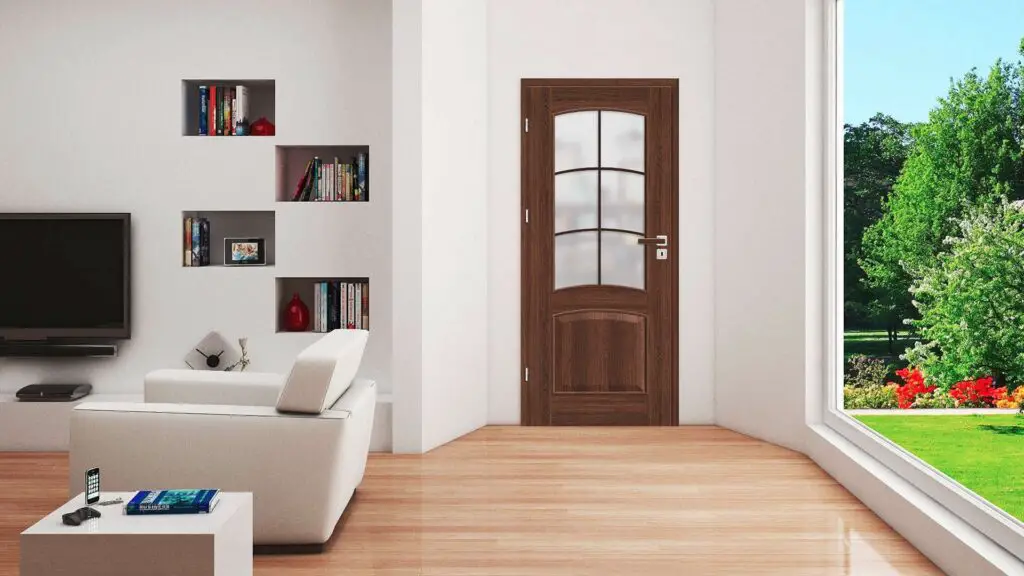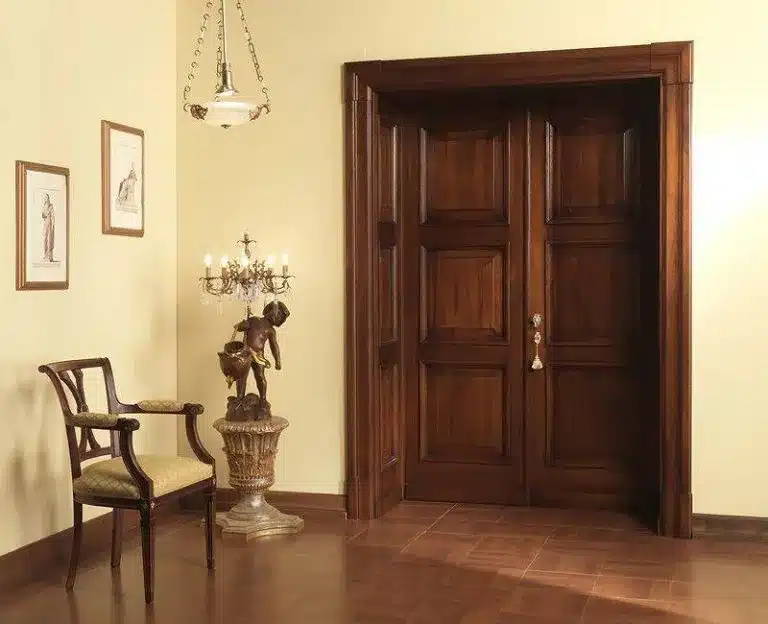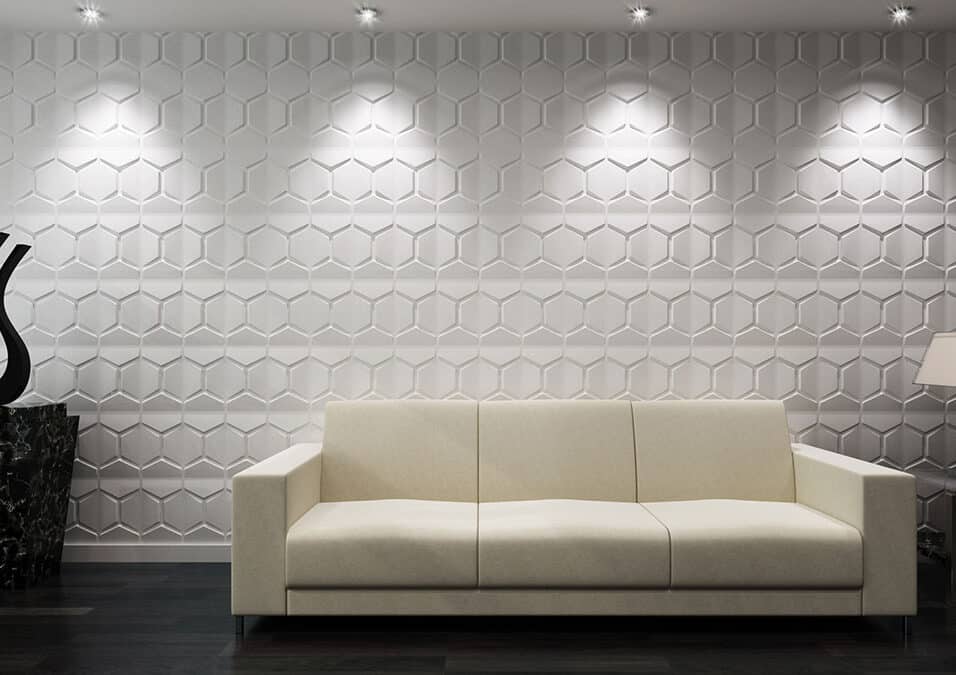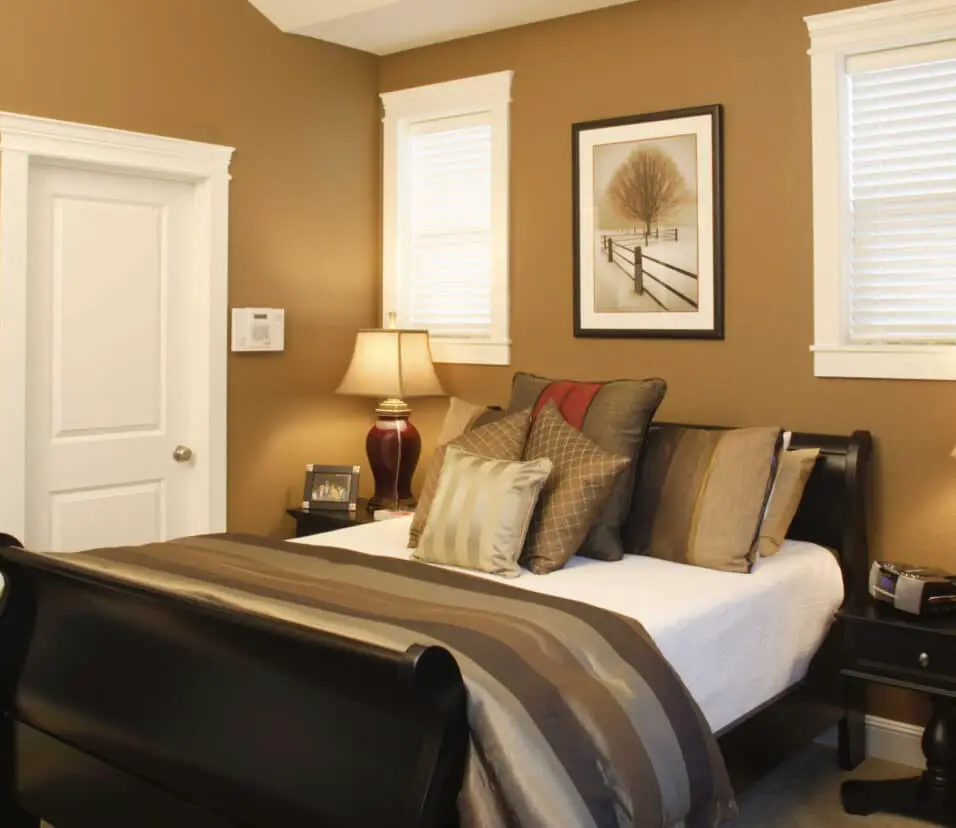How To Build An Interior Wall With A Door
Introduction
How To Build An Interior Wall With A Door: Building an interior wall with a door can be a great way to divide a large space into smaller, more functional areas. Whether you’re looking to create a separate room in your home or office, or simply want to add some privacy to an open floor plan, constructing an interior wall with a door is a relatively straightforward process that can be completed with the right tools and materials.
Next, gather the necessary materials and tools for the project. You will need studs, drywall, screws, a door frame, a door, a level, a tape measure, a saw, a drill, and a hammer. Make sure to choose materials that are appropriate for the purpose and aesthetic of the wall. For example, if you’re building a soundproof wall, you may want to use insulation between the studs to minimize noise transfer.
Once you have all the materials and tools ready, it’s time to start building the interior wall. Begin by framing the wall using the studs, ensuring they are spaced evenly and securely attached to the floor and ceiling. Use a level to ensure the wall is straight and plumb. Then, install the door frame according to the manufacturer’s instructions, making sure it is level and securely attached to the studs. Finally, hang the door and make any necessary adjustments to ensure it opens and closes smoothly.

How much does it cost to build an interior wall with a door?
When it comes to building an interior wall with a door, the cost can vary depending on several factors. These factors include the size of the wall, the type of materials used, the complexity of the design, and the location of the project. It is important to consider these factors when estimating the cost of building an interior wall with a door.
The size of the wall is one of the main factors that will affect the cost. A larger wall will require more materials and labor, which will increase the overall cost. Additionally, if the wall needs to be load-bearing or if it requires additional structural support, the cost will also be higher.
The type of materials used is another important factor to consider. The cost of materials can vary greatly depending on the quality and type of materials chosen. For example, using high-end materials such as hardwood or custom-made doors will increase the cost compared to using standard materials.
The complexity of the design can also impact the cost. If the wall requires intricate detailing or unique features, it will require more time and skill to construct, which will increase the cost. Additionally, if the wall needs to be soundproof or fire-resistant, special materials and techniques will be required, which will also add to the cost.
Lastly, the location of the project can affect the cost. Labor and material costs can vary depending on the region or city where the project is taking place. It is important to research local prices and factor in any additional costs such as permits or inspections that may be required.
How do you cut a door into an interior wall?
Steps:
- Outline the new doorway’s rough opening onto the wall with blue painters tape.
- Use reciprocating saw to cut through drywall or plaster.
- Cut the baseboard using the reciprocating saw.
- Pull the drywall or plaster, and baseboard from the doorway opening.
- Nail short 2×4 blocks under subfloor.
Considerations for Electrical and Plumbing
Firstly, you need to determine the location and size of the door opening. Carefully measure the dimensions of the door frame and mark the desired location on the wall. It is important to ensure that the chosen location does not interfere with any electrical or plumbing lines. Additionally, consider the height and width of the door to ensure it fits properly within the wall.
When it comes to cutting a door into an interior wall, there are several steps and considerations to keep in mind. Whether you are looking to create a new doorway or replace an existing one, it is important to approach the task with caution and precision. By following the proper techniques and using the right tools, you can successfully cut a door into an interior wall.
Next, you will need to remove the drywall or plaster from the marked area. Use a utility knife to score along the edges of the marked outline. Then, carefully remove the drywall or plaster using a pry bar or hammer. Take caution to avoid damaging any electrical wiring or plumbing that may be hidden within the wall.
Once the drywall or plaster is removed, you can begin framing the door opening. Measure and cut the necessary studs and headers to create a sturdy frame for the door. Use a level to ensure that the frame is plumb and square. Secure the frame in place using nails or screws.
After the frame is in place, you can install the door itself. Follow the manufacturer’s instructions for proper installation. This may involve attaching hinges, handles, and other hardware. Once the door is installed, test it to ensure it opens and closes smoothly.
How to build a wall step by step?
There are 11 steps in this guide to building a brick wall.
1: Start your brick wall at the corners. Firstly, lay out the bricks at both ends of your wall where the pillars will start.
2: Mix the mortar.
3: Lay the first course of bedding mortar.
4: Create the brick pillars.
5: Cutting bricks.
Building a wall may seem like a daunting task, but with the right tools and a step-by-step approach, it can be a manageable project for any homeowner. Whether you’re looking to add privacy to your backyard or create a boundary for your property, constructing a wall can provide both functionality and aesthetic appeal to your space.
Step 1: Planning and Preparation
Before you begin building your wall, it’s important to carefully plan and prepare for the project. Start by determining the purpose and location of the wall. Consider factors such as the desired height, length, and materials you’ll need. Additionally, check with your local building codes and obtain any necessary permits.
Step 2: Gathering Materials and Tools
Once you have a clear plan in place, gather all the materials and tools you’ll need for the project. This may include bricks or stones, mortar, a trowel, a level, a wheelbarrow, and safety equipment such as gloves and goggles. It’s important to have everything on hand before you start to ensure a smooth construction process.
Step 3: Marking and Digging the Foundation
Next, mark the area where the wall will be built using stakes and string. This will serve as a guide for digging the foundation. Use a shovel or a rented excavator to dig a trench that is at least 12 inches deep and wide enough to accommodate the width of the wall. Ensure the trench is level and compact the soil at the bottom.
What is the cheapest way to build a wall?
Natural Stones. Natural stones, like slate and river stones can also be used to build an effective retaining wall. From a cost standpoint, a natural stone retaining wall can be the cheapest version if the stones can be collected.
When it comes to building a wall, cost is often a major consideration. Whether you are looking to build a wall for a garden, a retaining wall, or a partition wall inside your home, finding the cheapest way to do so can help you save money. There are several options available that can help you build a wall on a budget.
Alternatively, you can consider using gabion walls. Gabion walls are constructed by filling wire cages with rocks or other materials. They are relatively inexpensive and provide a natural and textured look. Gabion walls are also durable and can withstand harsh weather conditions.
If you are looking for a temporary wall solution, consider using pallets. Pallets can be easily sourced for free or at a low cost. By stacking and securing them together, you can create a quick and affordable wall. Pallet walls can be used for various purposes, such as creating a backdrop for events or dividing spaces temporarily.
How do you build a quick wall?
Instructions
- Locate the Wall Space and Measure the Ceiling Height. With the tape measure, measure the height of the ceiling.
- Cut the Wall Studs.
- Cut the Foam Spacers.
- Dry-Fit the Wall Together.
- Fasten the Bottom and Top Plates.
- Glue the Bottom Spacer.
- Raise and Secure the Wall to the Ceiling.
- Secure the Wall to the Floor.
Constructing a Quick Wall: Steps and Tips for Efficient Building
Building a quick wall can be a challenging task, especially if you are not familiar with the process. However, with the right tools and techniques, you can successfully construct a wall in a relatively short amount of time. In this article, we will discuss the steps involved in building a quick wall and provide some tips to help you complete the project efficiently.
The first step in building a quick wall is to gather all the necessary materials and tools. You will need bricks or blocks, mortar, a trowel, a spirit level, a tape measure, and a hammer. It is important to ensure that you have enough materials to complete the entire wall before you begin the construction process.
Once you have gathered all the materials, the next step is to prepare the foundation. Start by marking the area where the wall will be built using a tape measure and stakes. Dig a trench along the marked line, ensuring that it is deep enough to accommodate the first row of bricks or blocks. Use a spirit level to ensure that the trench is level.
After preparing the foundation, it is time to lay the first row of bricks or blocks. Apply a layer of mortar to the trench using a trowel and then place the first brick or block on top. Use a spirit level to ensure that it is level and adjust as necessary. Repeat this process for the entire first row.
Continuing Wall Construction: Adding Rows for Desired Height
Once the first row is complete, continue building the wall by adding additional rows of bricks or blocks. Apply mortar to the top of each brick or block before placing the next one on top. Use a spirit level to ensure that each row is level and adjust as necessary. Repeat this process until the desired height of the wall is reached.
To build an interior wall with a door, you will need several materials and tools. The necessary materials include 2×4 lumber for the wall framing, plywood or drywall for the wall surface, nails or screws for fastening, insulation for soundproofing and temperature control, and a door frame and door for the entrance. Additionally, you will need a level and a tape measure for accurate measurements, a circular saw or a miter saw for cutting the lumber, a hammer or a drill for fastening, and a utility knife for cutting the insulation and wall surface materials.
It is important to ensure that you have all the necessary materials and tools before starting the construction process. This will help you work efficiently and avoid unnecessary delays. Additionally, make sure to wear appropriate safety gear, such as gloves and safety glasses, to protect yourself during the construction process.
Overall, building an interior wall with a door requires careful planning and the right materials and tools. By having everything you need in advance, you can ensure a smooth construction process and a successful end result.
What are the step-by-step instructions for framing and constructing an interior wall with a door?
Building an interior wall with a door requires careful planning and precise execution. Here are the step-by-step instructions to guide you through the process:
Step 1: Measure and mark the wall layout:
Start by measuring the desired length and height of the wall. Use a chalk line or a straightedge to mark the layout on the floor. Ensure that the layout is square by measuring diagonally from corner to corner.
Step 2: Install the bottom plate:
Cut a pressure-treated 2×4 to the length of the wall and secure it to the floor using concrete screws or nails. Make sure it is level and aligned with the layout marks.
Step 3: Frame the wall:
Cut two vertical studs to the height of the wall, minus the thickness of the top plate. Attach them to the bottom plate using framing nails or screws. Then, cut and install the top plate, making sure it is level and aligned with the layout marks.
Step 4: Add the door frame:
Measure and mark the location of the door on the wall. Install the door frame according to the manufacturer’s instructions, ensuring it is plumb and level. Secure it to the wall studs using framing nails or screws.
Step 5: Install the remaining studs:
Cut and install additional vertical studs between the top and bottom plates, spacing them evenly. Secure them with framing nails or screws.
Step 6: Add blocking and insulation:
Install horizontal blocking between the studs at the height of the door frame. This will provide additional support for the door. Fill the wall cavities with insulation to improve energy efficiency.
Step 7: Attach the drywall:
Cut and install drywall sheets on both sides of the wall, securing them to the studs with drywall screws. Leave an opening for the door and cut out the necessary openings for electrical outlets or switches.
Step 8: Finish the wall:
Apply joint compound to the seams and screw holes in the drywall. Allow it to dry, then sand it smooth. Prime and paint” “
How can I ensure that the wall is properly aligned and level during the construction process?
Ensuring that the wall is properly aligned and level during the construction process is crucial for a successful and professional-looking result. Here are some steps you can take to achieve this:
1. Use a level: One of the most important tools for ensuring a level wall is a good quality level. Start by placing the level vertically against the wall studs to check for plumb. Adjust the studs as necessary to achieve a straight and plumb wall. Then, place the level horizontally across the studs to check for levelness. Make any necessary adjustments to ensure the wall is level from top to bottom.
2. Utilize a chalk line: A chalk line can be a helpful tool for ensuring that the wall is properly aligned. Use it to mark a straight and level line on the floor where the bottom plate of the wall will be placed. This will serve as a guide for aligning the studs and ensuring that the wall is straight.
3. Measure and double-check: Take accurate measurements throughout the construction process to ensure that the wall is properly aligned. Use a tape measure to measure the distance between studs and make sure they are evenly spaced. Double-check all measurements before securing the studs in place.
By following these steps and paying attention to detail, you can ensure that your interior wall with a door is properly aligned and level. This will not only result in a visually appealing finished product but also ensure the structural integrity of the wall.
Are there any specific building codes or regulations that need to be followed when building an interior wall with a door?
Yes, there are specific building codes and regulations that need to be followed when building an interior wall with a door. These codes and regulations vary depending on your location, so it is important to check with your local building department or consult a professional to ensure compliance.
One common requirement is the use of fire-rated materials for walls that are adjacent to a garage or other fire hazard areas. This is to ensure the safety of occupants in case of a fire. Additionally, there may be specific requirements for the size and placement of doors, as well as the use of proper insulation and soundproofing materials.
It is also important to follow electrical and plumbing codes when installing outlets, switches, or any other electrical components within the wall. This includes proper grounding and the use of GFCI outlets in areas where water may be present. Failure to comply with these codes can result in safety hazards and may lead to costly repairs or fines.
What are some common mistakes to avoid when building an interior wall with a door, and how can they be prevented?
When building an interior wall with a door, there are several common mistakes that should be avoided to ensure a successful construction project. One common mistake is not properly measuring and planning the location of the door. It is important to carefully measure and mark the desired location of the door before beginning the construction process. This will help prevent any issues with the door not fitting properly or being misaligned.
Another common mistake is not properly securing the wall studs. It is crucial to securely attach the wall studs to the top and bottom plates to ensure the stability and strength of the wall. This can be done by using appropriate nails or screws and ensuring they are properly spaced and aligned.
Additionally, it is important to avoid rushing the construction process. Taking the time to carefully follow the step-by-step instructions and double-checking measurements and alignments can help prevent costly mistakes. It is also recommended to seek professional advice or assistance if needed, especially for complex projects or if you are unsure about any aspect of the construction process.

Conclusion
Building an interior wall with a door is a complex but rewarding project that can greatly enhance the functionality and aesthetics of a space. By following the necessary steps and using the right tools and materials, anyone can successfully complete this task. It is important to carefully plan the layout and measurements, ensuring that the wall and door fit seamlessly into the existing structure.
One of the key considerations when building an interior wall with a door is the choice of materials. It is crucial to select high-quality materials that are suitable for the specific purpose and location. This includes choosing the right type of framing lumber, drywall, and door. Additionally, it is important to use the appropriate tools and techniques to ensure a sturdy and durable construction.
Another important aspect to consider is the placement of the door within the wall. Careful measurements and planning are necessary to ensure that the door is properly aligned and functions correctly. This includes determining the height and width of the door opening, as well as the placement of the door frame and hinges. It is also important to consider any electrical or plumbing components that may need to be relocated or accommodated within the wall.
Building an interior wall framing with a door requires careful planning, attention to detail, and the use of high-quality materials and tools. By following the necessary steps and guidelines, anyone can successfully complete this project and create a functional and aesthetically pleasing space. Whether it is for dividing a room, creating a new room, or simply adding a door for convenience, building an interior wall with a door can greatly enhance the functionality and value of a space.








